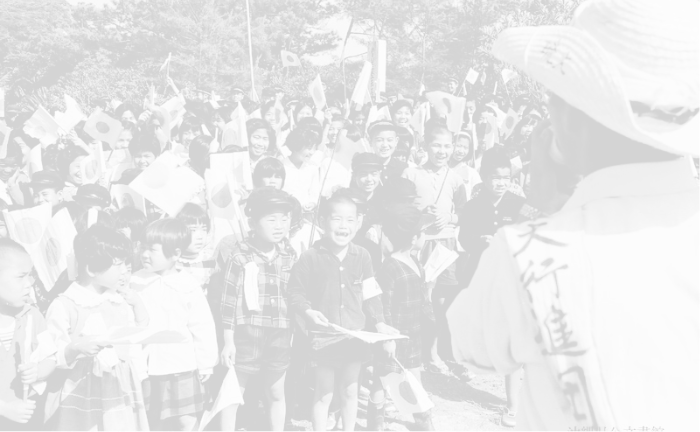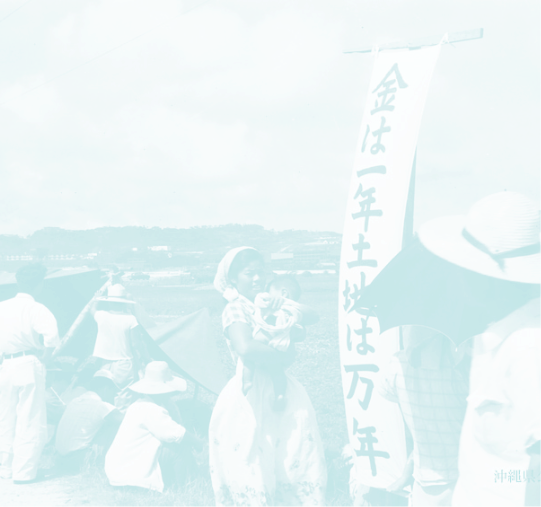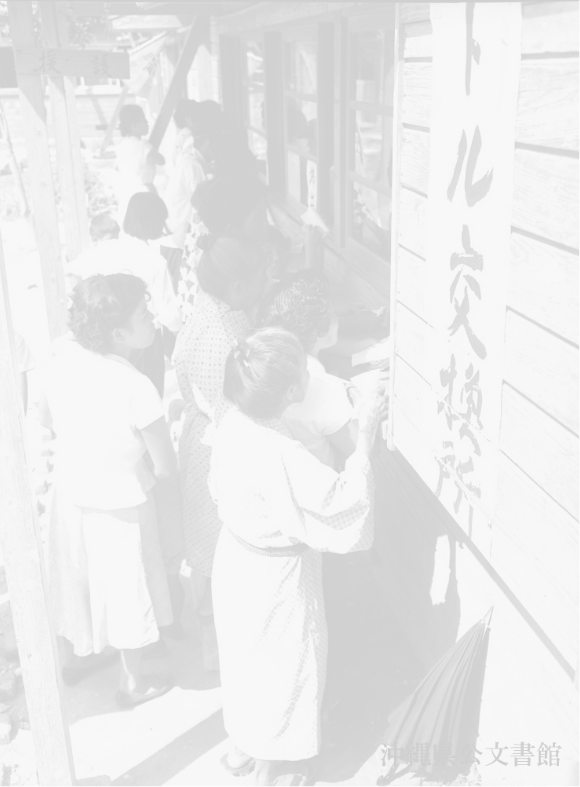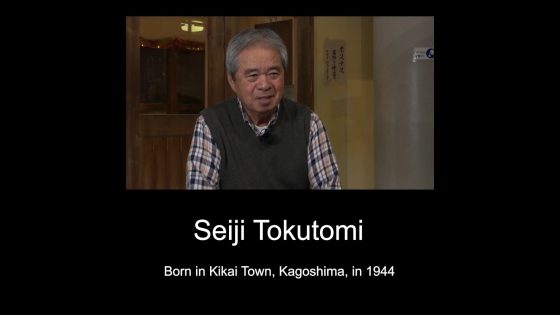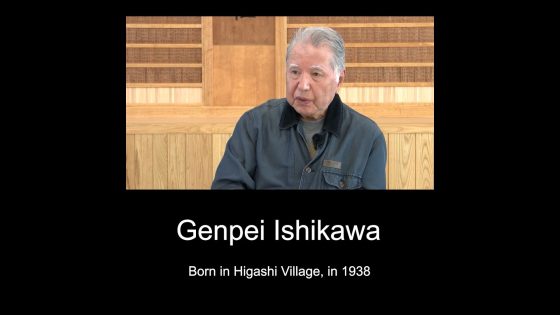
Bridging Okinawa and the US
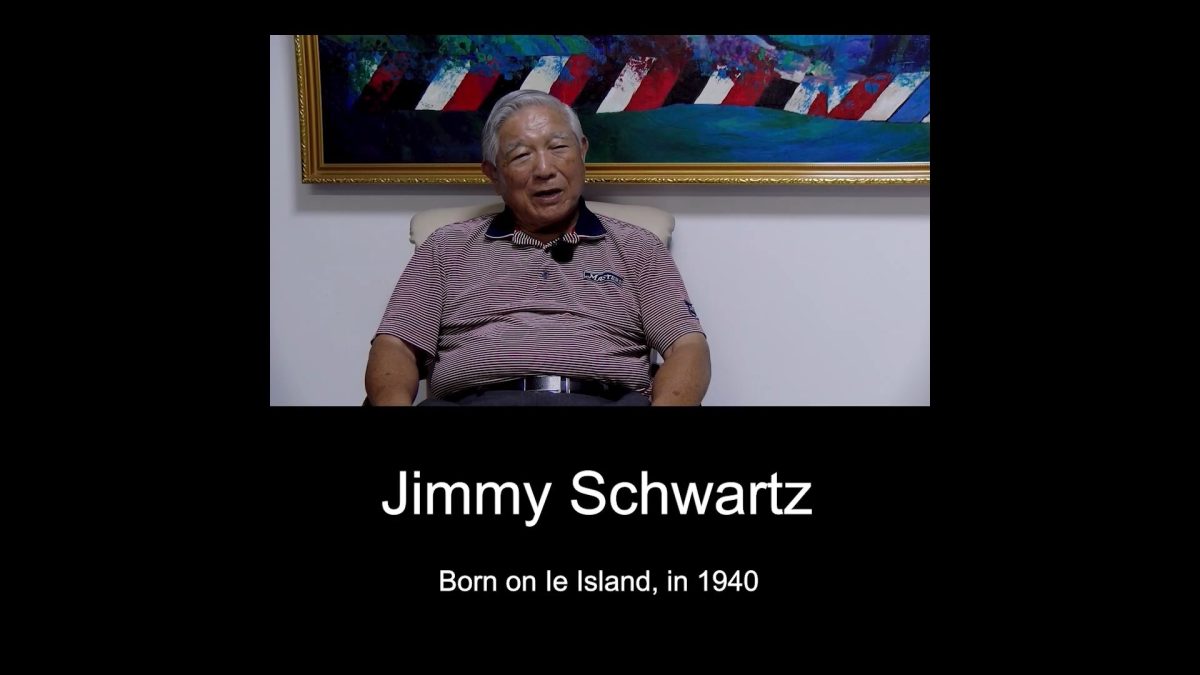

- Born in 1940
- Jimmy Schwartz
Index
- Brief biography of the witness
- Lost father in US military explosion
- Placed in US military custody and living in the base
- Adopted by the Schwartz family to the U. S.
- Became a soldier and served in Korea, Hawaii, Vietnam, and Okinawa.
- As a specialist in the High Commission
- Message to younger generations
- The site of the signing ceremony for the surrender of the Battle of Okinawa became Peace Memorial Park.
Timeline
| 1940 |
Born in Tokyo.
|
|
|---|---|---|
| 1946 |
Moved back to his hometown of Ie Island from Tokyo with his family. His father (Mr. Ryoichi Kochi) was a military interpreter.
|
|
| 1948 |
On August 6, an explosion occurred on a US Military’s Landing Ship Tank (LCT), killing 107 people, including his father.
|
|
| 1950 |
Taken in by the U.S. military and began living at the U.S. Army Ammunition Unit quarters in Higashi Onna, Ishikawa (now Uruma City).
|
|
| 1957 |
Adopted by the Schwartz family and became Jimmy Schwartz from Tatsuo Kochi. Next year, he traveled to the United States with the Schwartz family.
|
|
| 1960 |
He enlisted in the U.S. Army and was assigned to a unit at the 38th parallel in Korea.
|
|
| 1964 |
He was deployed in the Vietnam War. (Second tour in 1966).
|
|
| 1967 |
Returned to Kadena Air Base and became the Special Skills Officer First Class of the High Commission under U.S.-governed Okinawa.
|
|
| 1972 |
Resigned from the U.S. Army and began working at Kadena Air Base as a civilian employee of the U.S. Department of Defense.
|
|
| 2021 |
Retired from Kadena Air Base.
|
Story
Brief biography of the witness
Lost his father in the explosion of a US Military’s Landing Ship Tank (LCT) on Ie Island, and was taken in by the U.S. military to live in the ammunition unit's quarters. Later adopted by the Schwartz family and moved to the United States. Joined the military and was posted to Korea and Hawaii. Also deployed twice to the Vietnam War. After being transferred to his hometown of Okinawa, he served as the Special Skills Officer First Class of the High Commission, the chief executive under U.S.-governed Okinawa.
Lost father in US military explosion
Father Worked as an Interpreter
My father worked for a paper company called Oji Paper, and many people from Ie Island worked there. My father studied English and worked as an interpreter for the national government. After the war, he returned to Okinawa and worked as an interpreter for the US military ammunition unit on Ie Island. Around that time, my father was in an accident.
The Explosion of the US Military’s LCT (Landing Ship Tank) Bomb Disposal Ship on Ie Island
I heard a loud noise, and I looked up and saw black smoke rising twice as tall as MT. Gusuku, or as the locals call it, Iejima Tachu. I thought something terrible had happened, so I went home, but no one was there. I went to the pier, wondering where they had gone. And I found my mother and my uncle, pulling a cart carrying my father. My mother was on her way to a makeshift grave. She was crying and I asked her what was wrong. She told me that the person in the cart was my father. The fifth of us was born two months after my father died, but he was malnourished from lack of food, and died of a cold. 。
Placed in US military custody and living in the base
Placed in US Military Custody and Moved to Kadena Air Base
After that, my father's boss came to visit us from Kadena. A person called Mr. Meining came to see our life. When he saw the difficulties my family was going through after my father died, he told the commander of Kadena about my father's death. The rest of our family was struggling to make ends meet, so Mr. Meining came to see my mother to take care of one of the children going to school, on the condition that one child would be taken care of at Kadena Air Base. So they came and picked me up a week later. The reason why it was me was because I was the second son. My older brother had to be at the house all the time. So my mother told me to go. At that time, there was no food, so we ate things like sago palm fruit. The only meat available was mice. The first thing I thought when I was going to Kadena Air Base was, there would be three meals a day. It made me so happy. Later, Mr. Meining, the general of the ammunition unit, and Mr. Johnson came to pick me up.
New Life on the Base
They bought me good clothes. My eating habits also changed. And I started studying English. I was told to do everything myself. For a time, I went to a school for Americans, which is now a wedding hall in Okinawa City. There was a Quonset hut elementary school in front of that, and the principal of that elementary school enrolled me, but I didn't understand much English. And I hated losing, so every day I fought with boys in my class who tried to bully me. The principal called the guardian who was looking after me. At that time, they called me Tatsu, and the principal told him, “Please send Tatsu to a Japanese school, because only American children can attend here.” If I had been a quieter child, I think I would have been able to attend that school. So I went to Kina Elementary School in Yomitan Village. Even when I was in elementary school, my mother and siblings on Ie Island struggled with living expenses. I started earning money by delivering newspapers when I was in fourth grade, and sent that money to my mother, but they needed a little more. So the young soldiers in the US Army Ammunition unit taught me how to shine shoes, because that could earn you the most tips in the US. Everyone was happy that I was talented at shining shoes. As a shoeshine, I was able to send three times as much money to my mother as before. So my mother started a soba shop on Ie Island.
Adopted by the Schwartz family to the U. S.
From Meeting the Schwartz Family to Joining the Family
After that, my life stabilized, so I no longer had to send money. I started playing various sports. While spending time like that, I joined the same baseball team as the Schwartz brothers. I hated losing in everything I did, so I became the American baseball team’s star player. So, the Schwartz brothers invited me to have lunch at their house, and introduced me to their parents. Their father was a military man, and also a pastor at Futenma Baptist Church. So I studied the bible, and a year later I was baptized. After that, Mr. Schwartz asked me if I wanted to go to America with him, and I was so happy. I told him, “It's been my dream.” Mr. Schwartz called my mother, on Ie Island, and explained the situation. My mother also said that if I wanted to go, she would help. Then I went through the adoption process with the Schwartz family.
At that time, there were 2,500 adoptions to Americans from Europe every month. In Asia, 1,000 people were adopted each month. So I had already completed the formalities for adoption, but it wasn’t until a year later that I was able to go to the US. In the US I lived in Sedalia, Missouri.
Talent for Art Recognized at Work
I worked at a supermarket, packing and carrying customers' shopping bags. One day, about two weeks after I started, the person in charge of making advertising posters and making announcements was out, and the manager was looking around to find someone to replace him. The management asked me if I could do it, so I answered “I've never done it before, but I think I can” “Let me give it a try.” I asked the manager what he wanted, and made a poster in about 10 minutes. When he went to see it, the manager asked, “Who wrote this?” When I told him it was me, he was shocked. I said, “It was my first time, but I was able to do it.” And he told me, “Starting tomorrow, we’re moving you from part-time to a full-time employee. “After that, I started writing posters and advertisements for various products on the window glass. So you just don’t know until you try. When I thought I could do something, I didn't say “no,” but instead “let me try.”
Became a soldier and served in Korea, Hawaii, Vietnam, and Okinawa.
Desire to Join the Army
Then the day came to apply for the military. I was called up to the military, and underwent three months of training. The job description for the educational background was blank, meaning that it could be anything, or even no experience. It was run by Mr. Schwartz’s unit. The unit's job was to destroy bridges and other things, using dynamite, at the 38th parallel north, in South Korea. I don't know who there was sharing information that spread the word that I had various specialized skills. So I made signs, pictures, and letters of appreciation. I didn't touch the ammunition at all. I went on to do beautification work alongside great people. I came here with the feeling that I could do anything if I just tried.
I had no experience, so I'm glad I joined the military, because I learned a lot of things. Mr. and Mrs. Schwartz told me to choose everything for myself, so they didn’t oppose me joining the military. I had to manage my own life from then on. However, I wanted to give back to the people who raised me in the military. And I wanted to go back to Okinawa again to see my mother and brothers, on Ie Island. So I joined the army. My first assignment was to Germany, I asked my commanding officer if I could go to Asia. I had a colleague with the same job title as me, who was assigned to Korea but wanted to go to Europe, so the commander took care of both of us, and I was assigned to Korea. Since Korea is close to Okinawa and Japan, I was able to come to Okinawa during my leave. I joined the Army on January 4, 1960. I was asked where I would like to go after my year in Korea. When I answered Okinawa or Hawaii, the chief of staff said that I should go Hawaii, because he had a younger brother there who was the commander of the 25th division. I took a letter from the chief of staff to Hawaii. Then a lieutenant general from the Hawaii headquarters was sent to Vietnam. Until then, I had not been assigned to actually go to war so I asked the commander to send me to Vietnam. After training I went to Vietnam, and came back after a month. I told the commander of the 25th division in Vietnam that the only place I wanted to be assigned next was Okinawa. So the commander wrote me a letter. He told me he was giving me a week's leave, and to take the letter with me. I gave the letter from the commander to the chief of staff. When I arrived there, there were no openings for the position, but I was stationed in Okinawa as an engineer. This had never happened before.
As a specialist in the High Commission
From Engineer to Specialist in the High Commission
I was given an engineering job for three and a half months before working for the High Commissioner of the Ryukyu Islands. I looked at the nautical charts of Saipan, Tinian, Okinawa’s main island, Miyako, and Yaeyama, and I drew the map based on which areas were shallow enough for reclaimed land. After completing my job as an engineer, I had an interview with the commissioner. During the interview for the Special Skills Officer position, I said “I respect the High Commissioner,” “because he works hard for Okinawa.” “I'm a native Okinawan, and I can speak Japanese and understand the Okinawa dialect.” “I'll do my very best, so please let me join your team. The next day, the chief of staff called me and said that the High Commissioner would like to meet me. When I went to see him, he said, “I can't imagine anyone wanting to work for me because I'm so busy.” “I think you could work in all sorts of places.” But I said, “Please let me be on your team.” “I'm sure there's something I can do. “The first role given to me by the High Commissioner was to provide support during inspections. Okinawa's mayors, local council members, and Japanese government top officials were replaced every three years, and the commissioners couldn’t speak Japanese very well, so they had trouble remembering names. I received photos of the mayors of each municipality, including remote islands, and learned their names. Whenever they did inspections, I always accompanied them, the High Commissioner was very happy when I taught him how to greet people, and I gave him detailed information about the names of the people he was greeting. The assignment turned from three months to five months, and continued after that. Even after Mr. Lampert took over, the High Commissioner put me on his team.
Accompanying the High Commissioner on His Inspection Tours
I visited all the remote islands during inspections. The High Commissioner was required to visit all parts of Okinawa. I also went to inspections on the commissioner's plane, on a helicopter, and sometimes on ships. Either the commissioner's ships in Yaeyama and Miyako, or one in Naha. We visited the small remote islands. When we visited Minna Island in the Miyako Islands, which has a population of about 20 people, locals were making a feast. The commissioner's ship couldn't get to the island, so I had Sabani ship come to pick us up from the island. I ate a feast with the locals. No matter where I went on inspections, I sometimes expressed requests directly to the commissioner, and other times when ward mayors or others expressed requests to me, I told them directly talk to the commissioner, but they said “Can’t you ask him about it?” “I couldn’t talk directly to such a person. “Whenever he went to Ie Island for inspections, I always came along. When I went to remote islands for inspections, the village mayors and the ward mayors made various requests to me, such as building or fixing roads. When I asked the High Commissioner how to deal with requests from the residents, he told me to go to the civil government and discuss it with them. So I went to the civil government and told them it was a request from the commissioner. I asked them to look into it properly since this was a request from him.
To the Scene of the Koza Riot
I woke up at 2:30 a.m. and went to see the scene in my car with the commissioner. My house was across the street from the commissioner's house, so I was always called if something happened. I thought it was really unfortunate that the Koza riot happened. The people who started the riot had a lot to do with the Military Police, but I wondered why they had to go to such lengths. A lot of people were happy to see that. At that time, I couldn't say anything to the High Commissioner. I just felt like it was a shame. He didn't say anything either, but we made eye contact. I think he was thinking the same thing as me. I am a native Okinawan, and an American. The commissioner and I witnessed it together, but it was painful, especially since I went there with the High Commissioner. I now think it was a learning experience for me.
Okinawa’s Return to Japan
I knew that the day would come when Okinawa would return to Japan, after Mr. Chobyo Yara became the chief administrative officer. I think May 15 is an important day for Okinawa. I think it was a good thing that Okinawa was returned to Japan. Even now, there are 250,000 people, including their families, who are connected to the base. There used to be about 380,000 people working in base-related jobs rather than in construction or other military work. In Okinawa, there were many people who were able to make a living thanks to the base, at a time when there were no jobs due to the war. Immediately after the end of the war, there were no machines, so there were thousands of grass-cutting workers working on the airfields inside the bases. Nowadays, it's mechanized, but some companies have been mowing grass on bases for nearly 50 years.
Message to younger generations
Message to Younger Generations
Times have changed and children today are living good lives. I don't think they've ever thought about the old life styles back when their parents and grandparents were growing up. But I think parents should tell their children about their old lives. I think it is the parents' responsibility to pass on the story of their family's experiences, even if there are no photographs left.
From His Own Experience
I came out of Ie Island during the toughest time, and was able to make a living through the help of everyone. In order to repay that kindness, I now go to the orphanage every week. I bring the children treats and tell stories. In Korea and Vietnam where I was posted, I taught children how to shine shoes, and prepared boxes of shoeshine tools. Since returning to Okinawa, I have been helping with orphans’ school fees. It's not enough if it’s just one person. Everyone's living environment has to improve. History will be lost if parents don’t share important things like these with their children. It’s their responsibility. Today's children are fortunate enough to receive allowance money, eat what they want, and buy what they want. But I don't think this is a good thing. We should be more like America, where if you want something, you work to get it yourself. Children these days are big, so they can help others if they try. I think maybe they’re a little too lucky, and they lose out on some things. We should take a more educational approach, and teach children more about their parents' and grandparents' times.
The site of the signing ceremony for the surrender of the Battle of Okinawa became Peace Memorial Park.
Site of the Signing Ceremony for the Surrender, Maintained in Hope of Peace
This is a commemorative place in Peace Memorial Park. The headquarters of the US Army (10th Army) was located here. The peace agreement was reached here, with the signing of the surrender after the Battle of Okinawa. This is a really important place. Many people died in the war, so that's why there are many people who oppose war, as soldiers. When they leave their families behind and go to the battlefield, they don’t know if they’ll return. For soldiers, war is terrible. For Japan, the Pacific War began in Hawaii, and the surrender signing ceremony for the Battle of Okinawa was held here, leading the end of the war, so I wanted to leave it as something nice. For Japan, the Pacific War began in Hawaii, and the surrender signing ceremony for the Battle of Okinawa was held here, leading the end of the war, so I wanted to leave it as something nice. This is a commemorative place in Peace Memorial Park. The headquarters of the US Army (10th Army) was located here. The peace agreement was reached here, with the signing of the surrender after the Battle of Okinawa. This is a really important place. Many people died in the war, so that's why there are many people who oppose war, as soldiers. When they leave their families behind and go to the battlefield, they don’t know if they’ll return. For soldiers, war is terrible. For Japan, the Pacific War began in Hawaii, and the surrender signing ceremony for the Battle of Okinawa was held here, leading the end of the war, so I wanted to leave it as something nice. This place has been rebuilt about three times. We had a modern design, but after that was drawn up, the Pacific Commander told us that it was not possible due to the budget. So I searched for materials on my own. We prepared stones using the 100,000 yen donated by the Naha Air Self-Defense Force. The stones placed at the monument represent the countries involved in the Pacific War. And the green here is meant to represent a lasting peace. This tree, the Chinese juniper, can handle almost any climate, and is always green. It represents a wish that world peace might last forever. And this palm tree was planted to represent the Pacific Ocean. I planted this sago palm tree in the hopes that we would never have to eat it again, like we did during the difficult times after the end of the war.
RELATED
Educators in Okinawa Aiming for the Restoration of Education
- Born in 1938
- Genpei Ishikawa
